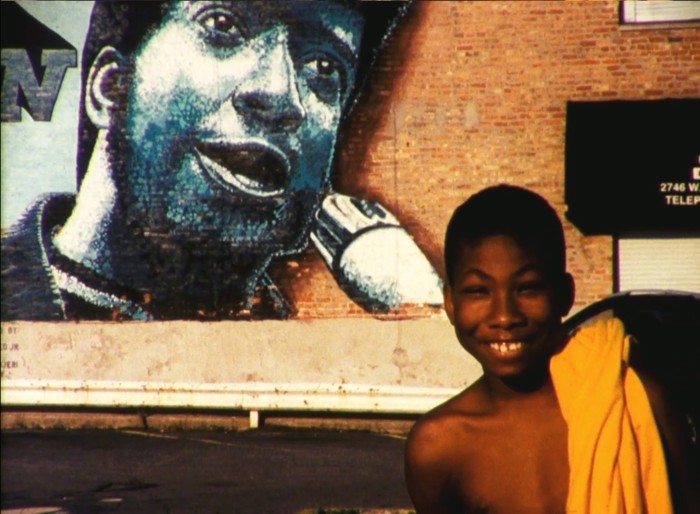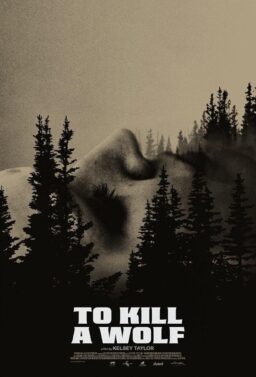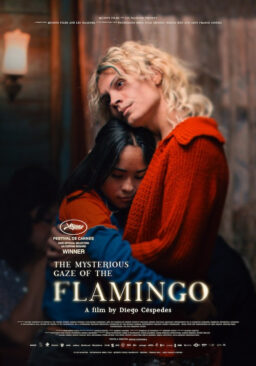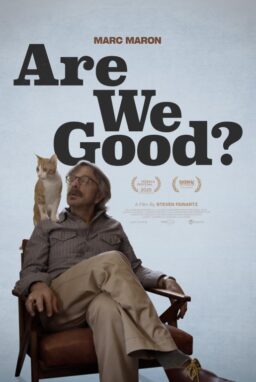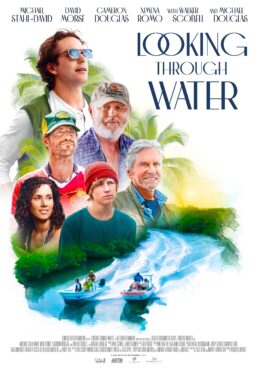The best film I saw at
this year’s Berlinale was Deborah Stratman’s “The Illinois Parables.”
Born in Washington D.C. and based in Chicago (she teaches at the University of
Illinois), Stratman has been making films for 26 years. She is the recipient of
Fulbright and Guggenheim fellowships, in addition to grants from Creative
Capital, the Graham Foundation and the Wexner Center for the Arts. Her latest
project, an hour-long essay film, traces the history of “America’s most average
state” (and its fifth most populous) from the seventh century to the mid-1980s,
all weaved together from an inescapably present-day vantage point.
Bookended by aerial
vistas of the Illinois River, of suburban grids and a
corn-colored rural patchwork, the film takes us from the mounds of
Cahokia—North America’s most significant pre-Columbian urban settlement, which
dated from 600 to 1400—to Buffalo Rock, site of Michael Heizer’s “Effigy
Tumuli” (1985), a series of five figurative mounds that harks back to the
earlier hillocks. Between, we travel among other places to Alton, where in 1673
the French Jesuit missionary Jacques Marquette wrote about a bluff-side
limestone mural of a mysterious and terrifying creature; Golconda (“Home of the
Pope County Pirates”), where some 9,000 Cherokees passed through on their Trail
of Tears in the late 1830s; Gorham and Crossville, ravaged by a tornado in
1925; Chicago, where the world’s first nuclear chain reaction took place in
1942; Joliet, home to an active army ammunition plant between 1940-1976;
Macomb, where a number of strange cases of domestic combustion were reported
throughout 1948; and again Chicago, where Cook County police murdered Black
Panthers revolutionary Fred Hampton in 1969.
Stratman’s rhythms are
seductive, her chosen histories fascinating, her modes of address playfully
demanding. She employs archival imagery (moving and still), witness testimony,
verbal and dramatic re-enactment, voice-over, on-screen text, and her own 16mm
footage—which, in capturing present-day pockets of the eponymous state in
richly colored analog, makes the whole thing feel like a document from another
age. “I see no hierarchy between these modes,” the filmmaker remarked, “and I’m
interested in the poetic sparks created when one style abuts another.”
Poetic sparks indeed:
the thematic riffs that begin to take hold here run through the increasingly
cohesive narrative like fire. Stratman, credited merely with “camera,” “edit”
and “soundesign” (sic), accelerates through fourteen centuries with maximalist
abandon. Her parables unfold as eleven chronologically arranged
vignettes—though as the thickly layered soundscape continues over the
roman-numeral intertitles (sans serif, top-to-bottom figures of “I,” “II” and
“III” all divide the screen into vertically sliced, black-and-white
abstractions), the chaptered structure isn’t immediately clear. Stratman has
described her film in terms of a sculptural work, and asks by implication for
us to become active participants in connecting the dots of her shape-shifting
thesis.
“Parables,” which
debuted at Sundance last month before receiving its European premiere in Berlin
Film Festival’s Forum Expanded section, is a dense collage of references and viewpoints—too
dense, perhaps, for one to make any sense of on first viewing. This
place-portrait boasts charged landscape after charged landscape—and Stratman
digs and digs again to work through their occult, buried and folkloric
associations. There are some wonderful flourishes here: the painted lines of a
tourist-tailored car park at the foot of a Cahokia mound; text from the Indian
Removal Act abruptly superimposed over a serenely snowy forest; the haunting
moan of a nearby train accompanying the image of a mural depicting the
Cherokees crossing the Ohio River in 1838.
In its carefully
structured focus on the various themes that emerge from and interconnect
through the history of a single territory (elective and forced migration,
physical and economic violence, cultural obliteration and technological
advancement), Stratman’s film recalls James Benning’s 1995 masterpiece
“Deseret.” (Nauvoo, one of Stratman’s locales, was established in 1840 by
Joseph Smith, founder of the Latter Day Saints Movement—one of the primary
subjects of the New York Times articles with which Benning’s film is narrated.)
Meanwhile, in its fascination with history’s losers, and in the recurrent
attention it gives to monuments and memorials, “Parables” also brings to mind
“Profit Motive and the Whispering Wind” (2007), John Gianvito’s hour-long
adaptation of Howard Zinn’s “A People’s History of the United States.” In many
ways this is a state-specific version of those works.

If Stratman’s film can
be described as a kind of brace through horizontal terrain (geographical as
well as historical), it finds its opposite in “Invention,” by Canadian
artist and filmmaker Mark Lewis. Lewis’ film, which premiered in Wavelengths
at Toronto last year (and which also screened in Berlin’s Forum Expanded), is a
vertical study, a deep map, a city symphony born out of spending a lot more
time in one place than is necessary. Bringing together previous installation
pieces, Lewis’ first feature-length endeavor is a topological inquiry into
three distinct urban spaces: Toronto, São Paolo and the Musée du Louvre in
Paris.
Lewis re-imagines
contemporary urban landscapes as throbbing organs pieced together with
intersecting lines, interconnecting grids and contrasting tissues (concrete,
steel, glass). His images encompass the natural world and the built
environment, from the diagonal crisscross of vibrantly colored escalators at
Pinheiros subway station in São Paolo to upside-down shadows cast across the
Escher-like staircase that spirals down from the Louvre’s Pyramid entrance. In
the background of one Toronto scene, we spy a figure sweeping away a precise
square of snow so that he can, eventually, practice BMX tricks within it (end
credits refer to him as Lord Percy Marshall IV). Nothing is what it seems here—and
just when we think we’ve figured out the mysteries of a city’s mundane
infrastructure, we discover secrets anew.
Lewis’ singularly
filmic methods of city engagement encourage—and elicit—an active process of
looking, of interpretative engagement. Pans and tilts, tracks and zooms:
through slow, elegant glides and subtle shifts in framing, he makes us spend
time in places to which we might not otherwise pay much attention. The opening
scene primes us into the kind of watchful, attentive state Lewis wants of us,
as his camera floats around a nude sculpture: circling it, getting up close to
it, retreating from it and circling it again. Though the camera’s smooth
circumnavigation of this form is a canny approximation of the way in which
tourists and experts might navigate a gallery space, its ineluctably
forward-looking gaze (no peripheral vision in cinema, however wide the screen)
allows and promotes extra scrutiny. Under such conditions, we begin to notice
blemishes, minutiae: tiny scratches and symptoms of deterioration.
It’s winter in downtown Toronto. A mound of snow has gathered on the flat roof of a building.
Below, an ice rink; across the way, a Sheraton hotel. The elevated viewpoint
allows us to see smoke billowing out of chimneys (an especially wintry image:
it resonates with our seasonally visible breaths). But the film isn’t just
these things. “Invention” is never “just” anything. Remarkably, Lewis’s camera
glides through a high-rise window—the triangular turret on the eastern edge of
University of Toronto’s Robarts Library—infiltrating its space and, once
inside, proceeding to cant and tilt so that we view the city below from
strikingly novel angles.
In drawing attention
to urban fabrics through these previously unknowable perspectives, Lewis advocates
a cinema that is human in its curiosity but coldly mechanical in movement. It
is also exciting: this is an architectural film, a landscape film—constantly
tricking us, eluding easy categorization. This is not merely the work of an
urban wanderer: traversing its locales in such a uniquely cinematic way, the
film’s engagement with cityspace transcends the literary roots of flânerie.
Figures come and go.
Landscape exists as a space of transition, of commutes, of journeys from A to
B. Lewis himself prefers to stay put, long enough for architectural secrets to
emerge: by looking long enough, he seems to suggest, we might find within one
space the working blueprints by which to re-paint things, re-start them. Note
that superb, back-and-forth crawl through the ground floor space of the
Toronto-Dominion banking pavilion, camera tilting upward so that its
ceiling-fixed, 4×4 grilles of mirror aluminum lights can enjoy, through their
reflections in immaculate floor-to-ceiling windows, visual connections with the
city grids outside. Grids, and grids within grids, are distinctly cinematic.
Now that this year’s
Berlinale award-winners have been announced (but for a FIPRESCI prize, Forum
and Forum Expanded are non-competitive), top marks must go to those responsible
for programming “Invention” in the IMAX theater of Berlin’s CineStar venue,
located in the Sony Center by Potsdamer Platz. The vast, tall screen couldn’t
have been a more appropriate way to encounter Lewis’ film, with sharp,
high-definition images that carry a sheen that’s hyperreal. For those of us
intuitively resistant to ultra-slick pictures, it’s crisp to a fault.
Surgical chic can be
hard to shirk. On 13 February 2016, this critic headed into a harsh,
pre-midnight air (1°C) after watching “Invention” more alert than usual to the
immensity of things. The Sony Center, a shimmering film-image in itself and
avatar for the future: reflective panes, glassy facades, corporate geometry.
Chain cafés, open-air escalators, the fluctuating hues of that skeletal parasol
that doubles as some half-hearted roof in the middle (flower petals or
helicopter blades depending on preference). When the Berlin Wall fell in 1989,
this area was derelict ground. Neither Mark Lewis nor Deborah Stratman had made
their first film.
The Sony Center, as we
know it, was completed in 2000. Its total cost was €750 million. Working with
landscape architect Peter Walker, Helmut Jahn was responsible for its design.
Also known for the 63-story Messeturm in Frankfurt, One Liberty Place in Philadelphia
and Suvarnabhumi Airport in Bangkok, Jahn was born in Nuremberg in 1940.
Between 1960 and 1965 he attended the Technical University of Munich. A year
later, he emigrated in order to advance his architectural studies. His
destination? Chicago, and its Illinois Institute of Technology.
